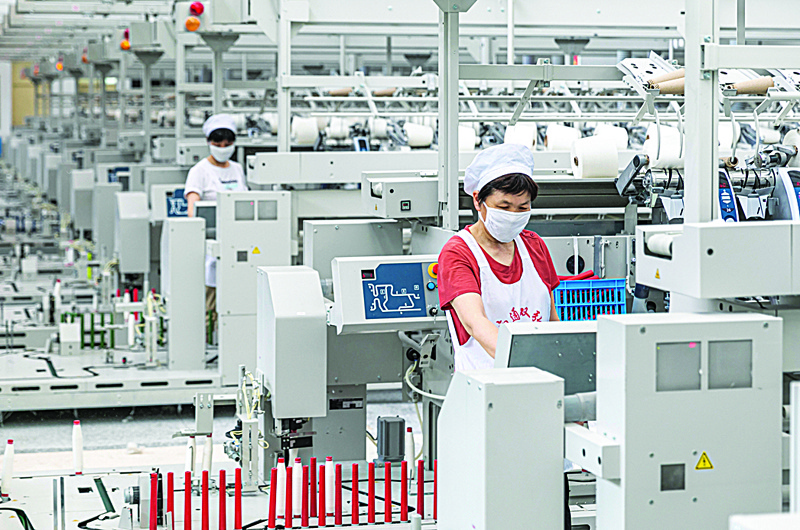BEIJING: China's sharp economic rebound from last year's pandemic slowdown lost steam in the second quarter, official data showed yesterday, with consumers lacking the confidence to splurge. The world's second-largest economy has staged a rapid recovery from last year's slump caused by the coronavirus pandemic, but its pace is easing with manufacturing slowing and consumer demand not picking up as quickly as expected. China's GDP growth came in at 7.9 percent on-year in the April to June period, said the National Bureau of Statistics (NBS) -- a significant drop from the 18.3 percent surge in the first three months.
An AFP poll of analysts tipped gross domestic product growth at 7.7 percent, with economists noting that China's economy has been expanding more slowly since the start of the year as the pandemic drags on globally. China's economy continued to "recover steadily" in the first half of 2021, said NBS spokeswoman Liu Aihua, although she cautioned that "there are many external uncertainties, and domestic economic recovery is uneven".
"Efforts are still needed to consolidate the foundation for stable recovery and development," she added. The earlier spike was largely skewed by the low base of comparison with last year, owing to large parts of the country being locked down to prevent the virus spread. But the latest figures suggest China should still be on track to meet its growth target of more than 6 percent for the year.
Muted demand
On a quarterly basis, China's growth grew by 1.3 percent, up from 0.4 percent in the previous quarter. But this is among the weakest quarterly growth since rates were first published in 2010, noted Capital Economics. Surging raw material costs and shipping disruptions are weighing on manufacturers, with factory activity also bogged down by supply shortages of semiconductors-used to make a range of goods from electronics to vehicles.
In June, industrial output rose 8.3 percent and retail sales grew 12.1 percent on-year, both edging down from the month before. Domestic demand "remained muted" in the second quarter, said Louis Kuijs, head of Asia economics at Oxford Economics. But he predicted "household consumption should be supported by rising vaccination and corporate investment by the recovery in profits." The urban unemployment rate was 5 percent, unchanged from May, authorities said. There are fears unemployment might be much higher due to large numbers of people working in the informal economy.
China was the only major economy to expand in all of 2020, and it is expected to enter a new phase of post-pandemic recovery. It has largely controlled its domestic coronavirus outbreaks with a mix of strict border controls, rapid lockdowns when cases are detected, and contact tracing. But these strict and inflexible measures have also created challenges, including a shipping container backlog caused by a coronavirus outbreak among port workers earlier this year.
Premier Li Keqiang warned this week that small and medium are facing difficulties due to higher costs caused by rising prices of bulk commodities, state media reported. The government should support smaller companies, he said. In an unexpected move, China's central bank also cut the amount of cash banks need to hold in reserve last week, releasing around one trillion yuan ($154.6 billion) in liquidity that could boost lending. "All told, activity in China remained strong in the second quarter," said Julian Evans-Pritchard of Capital Economics. "But with output already above its pre-virus trend, the economy is struggling to gain ground at its usual pace." - AFP



